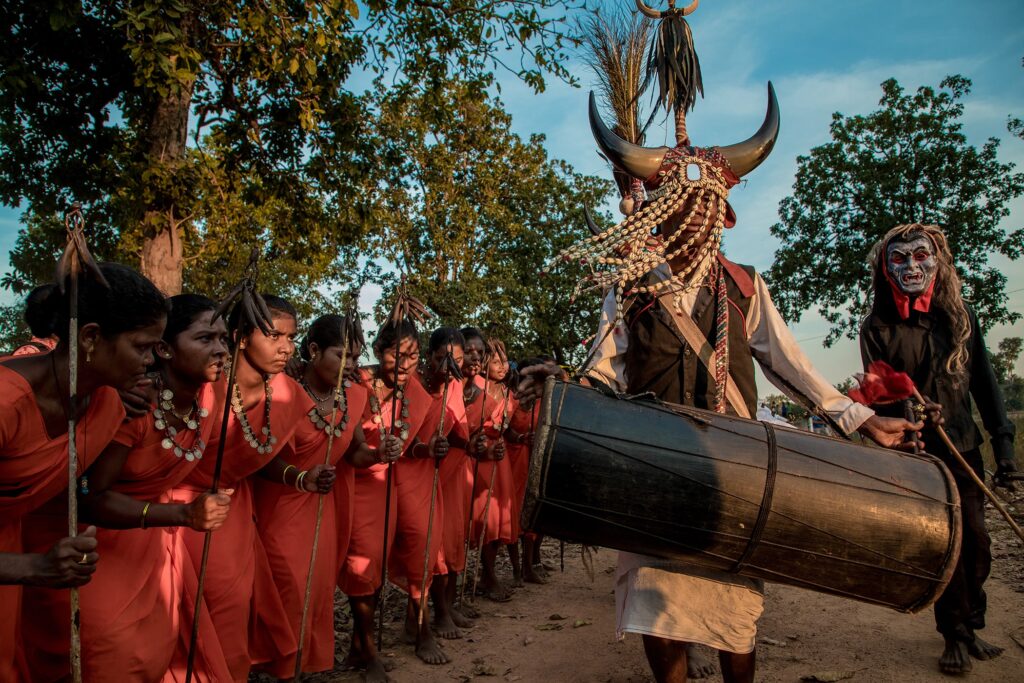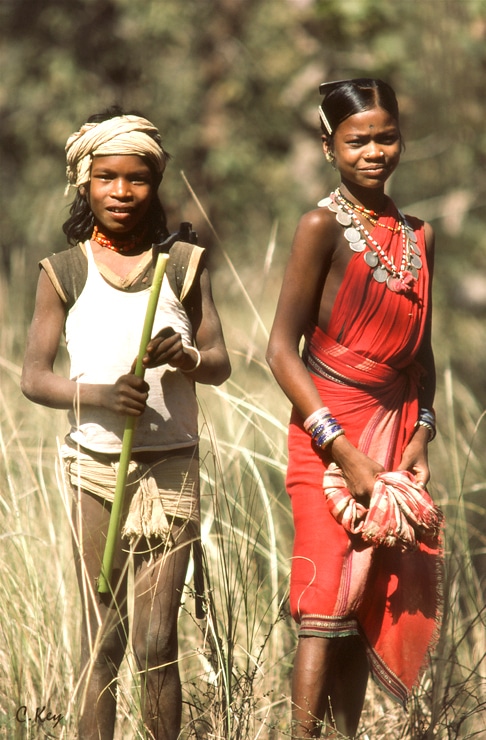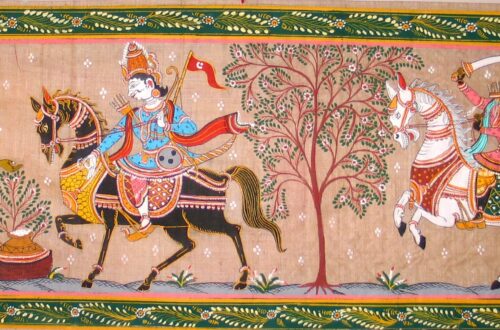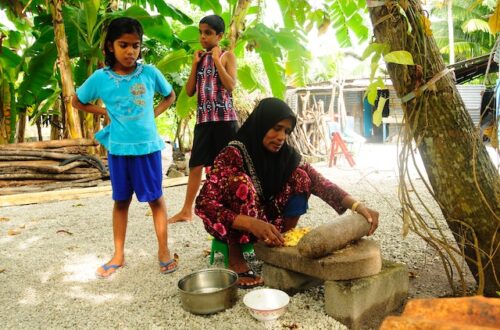
Exploring the Bison Horn Maria Tribe
India, a land of diversity and cultural richness, is home to a myriad of indigenous tribes, each with its unique traditions, customs, and way of life. One such tribe that captures the essence of India’s cultural tapestry is the Bison Horn Maria Tribe. Nestled in the heart of the country, this tribe has a rich history, deep-rooted traditions, and a unique lifestyle that reflects the harmonious coexistence of man and nature.

Historical Overview
The Bison Horn Maria Tribe, also known as ‘Maria’ or ‘Muria,’ traces its roots to the central Indian state of Chhattisgarh. The name “Bison Horn” is derived from the distinctive bison horn-shaped headgear worn by the men during traditional ceremonies and festivals. The tribe has a long and fascinating history, with roots that date back centuries.
Archaeological findings suggest that the Bison Horn Maria Tribe has been inhabiting the Bastar region for several thousand years. Their history is marked by resilience, as they navigated through various socio-political changes, preserving their unique identity and cultural heritage.
Cultural Traditions of Maria Tribe

Art and Craft
The Bison Horn Maria Tribe is renowned for its exquisite art and craft, which reflects their deep connection with nature. The tribe is particularly known for its terracotta figurines, traditional paintings, and intricate woodwork. The artisans of the tribe often depict scenes from daily life, nature, and folklore in their creations, providing a glimpse into the tribe’s worldview.
Dance and Music
Dance and music play a significant role in the cultural fabric of the Bison Horn Maria Tribe. The tribe’s traditional dances are vibrant, rhythmic, and often accompanied by traditional musical instruments. The celebrations are not only a means of entertainment but also a way of passing down stories and traditions from one generation to the next.
Rituals and Festivals
Rituals and festivals hold a special place in the Bison Horn Maria Tribe’s cultural calendar. The tribe follows animistic beliefs, worshipping nature and its elements. The ‘Bison Horn Dance’ is a prominent ritual, where men don the iconic headgear and perform a dance that symbolizes their reverence for the bison, an animal deeply intertwined with their cultural identity.
Socio-Economic Structure
The socio-economic structure of the Bison Horn Maria Tribe is unique and revolves around community living. The tribe traditionally practiced shifting cultivation, known as ‘Dongar,’ where they cultivated a piece of land for a few years before moving on to another. This sustainable agricultural practice allowed the tribe to maintain a balance with nature, ensuring the fertility of the soil while preserving the biodiversity of the region.
The community is tightly knit, with a strong emphasis on collective decision-making. Elders hold a revered position in the tribe, guiding the community with their wisdom and experience. The egalitarian social structure fosters a sense of unity and mutual dependence among the tribe members.

Challenges Faced by the Tribe
Despite their rich cultural heritage, the Bison Horn Maria Tribe faces various challenges in the contemporary world. Rapid urbanization, deforestation, and encroachment on their ancestral lands pose significant threats to their traditional way of life. The tribe is also grappling with issues related to education, healthcare, and economic opportunities, as they strive to find a balance between preserving their heritage and adapting to the changing times.
Efforts are underway, both by the government and non-governmental organizations, to address these challenges and empower the tribe to safeguard their cultural legacy while embracing positive aspects of development.
Initiatives for Preservation and Empowerment
Several initiatives have been launched to preserve the cultural heritage of the Bison Horn Maria Tribe and empower them to face the challenges of the modern world. Educational programs, skill development initiatives, and healthcare projects aim to improve the quality of life for the tribe members without compromising their cultural identity.
Non-profit organizations are working closely with the community to document and promote their traditional art forms, ensuring that the younger generation learns and appreciates the unique cultural expressions of their tribe. By creating avenues for economic growth that align with their values, these initiatives aim to strike a balance between tradition and progress.
Experience the charm of Rural living!!!
Conclusion
The Bison Horn Maria Tribe stands as a testament to India’s cultural diversity and the resilience of its indigenous communities. As we delve into the intricate tapestry of their traditions, art, and way of life, it becomes evident that the preservation of such cultures is not just a responsibility but a shared heritage for humanity.
In a rapidly changing world, it is crucial to appreciate and respect the unique identities of tribes like the Bison Horn Maria, ensuring that their cultural legacy continues to enrich the global mosaic of diversity. Through collaborative efforts, we can empower these communities to embrace the future while holding onto the threads of their past, creating a harmonious blend of tradition and progress.




